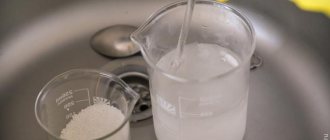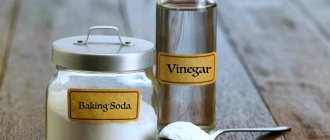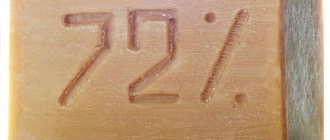Solid carbon dioxide
Sublimation dry ice pellet with white frost on the surface
Dry ice
it is a solid form of carbon dioxide. It is used primarily as a cooling agent, but is also used in theater fog machines for dramatic effects. Its advantages include a lower temperature than ice water and does not leave any residue (except for the occasional frost from moisture in the atmosphere). This is useful for preserving frozen foods where mechanical refrigeration is not available.
Dry ice sublimates at 194.7 K or -78.5 °C (-109.3 °F) on Earth atmospheric pressure. This extreme cold makes the solid dangerous to handle without protection from frostbite injury, damage. Although usually not very toxic, outgassing from it can cause hypercapnia (abnormally elevated levels of carbon dioxide in the blood) due to accumulation in a confined space.
Characteristics
For additional chemical data, see Carbon Dioxide Data.
Dry ice is the solid form of carbon dioxide (CO2), a molecule consisting of one carbon atom bonded to two oxygen atoms. Dry ice is colorless, nonflammable, with a sour, pungent odor and can reduce solution when dissolved in water, forming carbonic acid (CA2CO3).[1]
Comparison of phase diagrams of carbon dioxide (red) and water (blue) as a logarithmic diagram with phase transition points at 1 atmosphere
At pressures below 5.13 ATM and temperatures below -56.4 °C (-69.5 °F) (triple point), CO2 changes from a solid to a gas without an intermediate liquid form through a process called sublimation.[note 1] The opposite process is called deposition, where CO2 changes from gas to solid phase (dry ice). At atmospheric pressure, sublimation/deposition occurs at -78.5 °C (-109.3 °F) or 194.7 K.[2]
The density of dry ice increases with decreasing temperature and ranges from 1.55 to 1.7 g/cm3 (97 and 106 lb/cu ft) at -193.2 to -78.1 °C (-315. 8 to -108.6 °F) or 80 to 195 K.[3] The low temperature and direct sublimation into gas make dry ice an effective coolant, as it is cooler than ice water and leaves no residue when it changes state.[4] Its enthalpy of sublimation is 571 kJ/kg (25.2 kJ/mol).
Dry ice is non-polar, with a dipole moment of zero, so the attractive intermolecular van der Waals force works.[5] The composition results in low thermal and electrical conductivity.[6]
Step-by-step instruction
Take a piece of dry ice and place it on a metal spoon. After a few seconds it will begin to bounce and rattle slightly.
Let's throw dry ice into a glass bowl of water - we observe white smoke and the rapid release of gas bubbles.
If you add a few drops of dishwashing liquid to the water, a thick foam of soap bubbles filled with white smoke will appear.
Now take 3 beakers with indicator solutions: indigo carmine (blue color), phenolphthalein (no color) and litmus (red-orange color). Next, add some sodium hydroxide. The solutions changed their color: indigo carmine became green, phenolphthalein - crimson, and litmus - blue. Add a few pieces of dry ice to each glass. After some time, we observe a change in the color of the solutions to the original color.
Story
It is generally accepted that dry ice was first discovered in 1835 by a French inventor. Adrien-Jean-Pierre Tilorier (1790–1844), who published the first description of this substance.[7][8] In his experiments, it was observed that when the lid of a large cylinder containing liquid carbon dioxide was opened, most of the liquid carbon dioxide quickly evaporated. All that was left in the container was solid dry ice. In 1924, Thomas B. Slate applied for a license in the United States. patent to sell dry ice commercially. He subsequently became the first to make dry ice successful as an industry.[9] In 1925, this solid form of CO2 was trademarked by DryIce Corporation of America as "Dry Ice", leading to its common name.[10] That same year, DryIce Co. first marketed the substance commercially, selling it for refrigeration purposes.[9]
Where can I get dry ice?
It is not difficult to purchase refrigerated carbon dioxide today. Currently, many companies are engaged in its production and sale. Those wondering where dry ice is sold should check with the appropriate stores, such as Costco, Safeway, Wal-Mart and others. It should be borne in mind that some sellers sell goods only to persons over 18 years of age. It is necessary to buy ice immediately before use, because its shelf life is extremely short, it very quickly turns into a gaseous state.
Production
Play media
Sublimation of dry ice when placed on the surface of water at room temperature
Dry ice is easy to make.[11][12] First, gases with a high concentration of carbon dioxide are produced. Such gases may be a byproduct of another process, such as the production of ammonia from nitrogen and natural gas, an oil refinery, or large-scale fermentation.[12] Second, the carbon dioxide-rich gas is compressed and cooled until it becomes liquid. Then the pressure decreases. When this happens, some of the liquid carbon dioxide evaporates, causing the temperature of the remaining liquid to rapidly drop. As a result, due to extreme cold, the liquid hardens into snow. Finally, the snow-like solid carbon dioxide is compressed into small granules or large blocks of dry ice.[13][14]
Dry ice is usually produced in three standard forms: large blocks, small (1⁄2 or 5⁄8 inch [13 or 16 mm] diameter) cylindrical pellets, and tiny (1⁄8 inch [3.2 mm] diameter) cylindrical pellets with large surface area and volume that float in oil or water and do not stick to the skin due to the large radius of curvature. The tiny dry ice pellets are used primarily for dry ice blasting, flash freezing, fire extinguishing, oil solidification, and have been found safe for experimentation by high school students wearing appropriate personal protective equipment such as gloves and safety glasses. Standard unit weighs approximately 30 kg (66 lb)[ quote needed
] covered with tape are the most common. They are commonly used in shipping because they sublimate relatively slowly due to their low surface area to volume ratio. The pellets are about 1 cm (0.4 in) in diameter and can be easily bagged. This form is suitable for use on a small scale, such as in grocery stores and laboratories where it is stored in a tightly insulated chest.[15] The density of the pellets is 60-70% of the density of the blocks.[16]
Safety requirements for handling dry ice:
In terms of the degree of impact on the human body, carbon dioxide belongs to the 4th hazard class according to GOST 12.1.007-76.
Solid carbon dioxide is non-toxic and non-explosive.
Solid carbon dioxide can cause frostbite to the skin and damage to the mucous membrane of the eyes.
Do not handle solid carbon dioxide with unprotected hands. It is recommended to wear safety glasses and gloves when crushing and packaging dry ice.
Operating personnel must have: an insulating hose gas mask, safety glasses, cloth gloves, a padded jacket.
Gaseous carbon dioxide contained in the air of the working area up to 0.5% by volume does not pose a health hazard; at higher levels, it has a harmful effect on human health.
Carbon dioxide is one and a half times heavier than air and can accumulate in poorly ventilated rooms near the floor and in pits, as well as in the internal volumes of equipment for the production, storage and transportation of gaseous, liquid and solid carbon dioxide, reducing the oxygen content in the air, which can cause the phenomenon of oxygen insufficiency and suffocation.
Premises for the production of solid carbon dioxide, as well as premises for storing containers filled with carbon dioxide, must be equipped with general supply and exhaust and emergency ventilation.
(see GOST 12162-77 “Solid carbon dioxide. Technical conditions”, GOST 8050-85 “Gaseous and liquid carbon dioxide. Technical conditions”).
Applications
Commercial
Ice Cream Cart
Dry ice is most often used to preserve food.[1] using non-cyclic cooling.
It is often used to package products that need to remain cold or frozen, such as ice cream or biological samples, without the use of mechanical refrigeration. Used to store COVID-19 vaccinations that require storage at ultra-low temperatures. [1]
Dry ice can be used to flash-freeze food[17] or laboratory biological samples,[18] carbonate drinks,[17] make ice cream,[19] solidify oil spills[20] and stop ice sculptures and ice walls from melting.
Dry ice can be used to stop and prevent insect activity in closed containers of grain and grain products because it displaces oxygen but does not change the taste or quality of the products. For the same reason, it can prevent or slow the growth of edible oils and fats. rancid.
Sublimation Dry ice in water
When dry ice is placed in water, sublimation is accelerated and low-lying, dense clouds of smoky fog are created. It is used in fog machines, theaters, haunted houses, and nightclubs for dramatic effects. Unlike most artificial fog machines, in which the fog rises like smoke, dry ice fog floats near the ground.[14] Dry ice is useful in theatrical productions that require a dense fog effect.[21] The fog comes from the volume of water in which the dry ice is placed, rather than from atmospheric water vapor (as is commonly believed).[22]
It is sometimes used to freeze and remove warts.[23] However, liquid nitrogen works better in this role because it is cooler, requiring less time to act and less pressure.[24] Dry ice has fewer storage problems because it can be produced from compressed carbon dioxide as needed.[24]
Plumbers use equipment that forces liquid CO under pressure2 into a jacket around a pipe. The resulting dry ice causes the water to freeze, creating an ice plug that allows repairs to be made without shutting off the water supply. This method can be used for pipes up to 4 inches (100 mm) in diameter.[25]
Dry ice can be used as bait to deceive mosquitoes, bed bugs, and other insects due to their attraction to carbon dioxide.[26]
It can be used to exterminate rodents. This is accomplished by dropping pellets into rodent tunnels in the ground and then closing the entrance, thereby suffocating the animals as dry ice sublimates.[27]
Tiny dry ice pellets can be used to extinguish fires by cooling the fuel and suppressing the fire by eliminating oxygen.[28]
Extreme temperature of dry ice can cause viscoelastic materials to replace the glass phase. Thus, it is useful for removing many types of pressure-sensitive adhesives.
Industrial
Dry ice blasting used for cleaning gum mold Dry ice blasting for cleaning electrical installations.
Dry ice can be used to loosen asphalt floor tiles or vehicle sound-absorbing material, making it easier to remove,[29] as well as freezing water in valveless pipes for repairs.[30]
One of the largest mechanical uses of dry ice is in blast cleaning. Dry ice pellets are ejected from the nozzle with compressed air, combining the speed power of the pellets with the action of sublimation. This can remove residue from industrial equipment. Examples of removed materials include ink, glue, oil, paint, mold, and rubber. Dry ice blasting can replace sandblasting, steam blasting, water jetting or solvent blasting. The primary environmental residue of dry ice blasting is sublimated CO2, making it a useful method where residues from other blasting operations are undesirable.[31] Recently, abrasive blasting has been introduced as a method for removing smoke from structures after fires.
Dry ice is also useful for degassing flammable vapors from storage tanks—the sublimation of dry ice pellets inside an emptied and vented tank causes the release of CO.2 which carries the flammable vapors with it.[32]
Removing and installing cylinder liners on large engines requires the use of dry ice to cool and thus shrink the liner so that it fits freely into the cylinder block. When the liner then heats up, it expands and the resulting interference fit holds it tightly in place. Similar procedures can be used to produce mechanical assemblies with high resulting strength, replacing the need for studs, keys, or welds.[33]
Dry ice blasting, a form of carbon dioxide blasting, is used in a number of industrial applications.
It is also useful as a cutting fluid.
Scientific
In the laboratory, a suspension of dry ice in an organic solvent is a useful freezing mixture for cold chemical reactions and for condensing solvents in rotary evaporators.[34] Dry ice and acetone form a cold bath at −78 °C (−108 °F; 195 K), which can be used, for example, to prevent thermal runaway in Swern Oxidation.
The process of changing cloud precipitation can be done using dry ice.[35] It was used widely in experiments in the United States in the 1950s and early 1960s before being replaced by silver iodide.[35] The advantage of dry ice is that it is relatively cheap and completely non-toxic.[35] Its main disadvantage is the need to deliver seeded clouds directly into the supercooled region.[35]
Dry ice bombs
Main article: Dry ice bomb
Dry ice bomb
A "dry ice bomb" is a balloon-like device that uses dry ice in a sealed container, such as a plastic bottle. Water is usually added to speed up the sublimation of dry ice. As dry ice is elevated, the pressure increases, causing the bottle to burst, causing a loud noise that can be avoided by replacing the screw cap with a rubber stopper. water rocket with a two-liter bottle.
The dry ice bomb device was shown on MythBusters
, episode 57 Mentos and Soda, which first aired on August 9, 2006.[36]
It was also shown in the episode Time Warp
, as well as in the episode
Archer
.
Extraterrestrial origin
Following the Mars flyby by the Mariner 4 spacecraft in 1966, scientists concluded that the polar ice caps of Mars were composed entirely of dry ice.[37] However, findings in 2003 by researchers at the California Institute of Technology showed that the polar ice caps of Mars consist almost entirely of water ice, with dry ice forming only a thin surface layer that becomes thicker and thinner depending on the season.[37] [38] It has been suggested that the phenomenon, called a dry ice storm, may occur over the polar regions of Mars. They are comparable to terrestrial thunderstorms with crystalline CO.2 taking the place of water in the clouds.[39] Dry ice has also been proposed as a mechanism for Geysers on Mars.[40]
In 2012, the European Space Agency's Venus Express probe discovered a cold layer in Venus's atmosphere where temperatures are close to the triple point of carbon dioxide, and flakes of dry ice are possible to fall out.[41]
Observations of Uranus flyby by Voyager 2 indicate that dry ice is present on the surface of its large moons. Ariel,[42]Umbriel[42] and Titania.[42] Scientists suggest that Uranus' magnetic field promotes the formation of CO.2 ice on the surface of its moons.[43] Voyager 2: Observations of Neptune's moon Triton suggested the presence of dry ice on the surface, although subsequent observations indicate that carbon ice on the surface is carbon monoxide, but the lunar crust consists of significant amounts of dry ice.[44]
Safety
Dry ice pellets sublimate in water, forming a thick white mist.
A UN Label 1845 for Dry Ice Prolonged exposure to dry ice can cause serious skin damage. frostbite, and the fog can also interfere with attempts to break contact in a safe manner. Because it converts to large amounts of carbon dioxide, which can pose a hypercapnia hazard, dry ice should only be displayed outdoors in a well-ventilated environment.[29] For this reason, dry ice has been assigned the S-phrase S9 in the context of laboratory safety. Industrial dry ice may contain contaminants that make it unsafe for direct food contact.[45][ failed test
] The tiny dry ice pellets used in dry ice blasting contain no oily residue.
Although dry ice is not classified as a hazardous substance by the European Union,[46] or as a hazardous material by the US Department of Transportation for land transport, when transported by air or water, it is considered a dangerous good and IATA Packing Instruction 954 (IATA PI 954) requires that it was provided with special labeling, including a diamond-shaped black and white label, UN 1845. In addition, provisions must be made to ensure adequate ventilation so that increased pressure does not cause the package to rupture.[47] The Federal Aviation Administration in the United States allows airline passengers to carry up to 2.5 kg (5.5 lb) per person as either checked baggage or carry-on baggage if used to refrigerate perishable items.[48]
What is dry ice used for?
This substance is used in a variety of areas of human activity. Some areas where dry ice is used:
- Food industry. Dry ice allows you to “shock” food, which preserves its structure and all its healing properties. It is also used when transporting meat, fish and other semi-finished products. Dry ice is used for cocktails and produces a beautiful effect with it.
- Medicine. Donor organs and tissues and other biological materials are covered with dry ice.
- Sphere of entertainment. At various holidays and parties, cooled gas is used to create the effect of fog creeping across the ground.
- Fire extinguishing.
- Science and experimental experiments.
- In everyday life, for example, to protect against mosquitoes and midges.
Recommendations
- ^ a b
Yaws 2001, paragraph 125 - Barber, S. R. (March 1966). "The Sublimation Temperature of Carbon Dioxide". British Journal of Applied Physics
.
17
(3):391–397. Doi:10.1088/0508-3443/17/3/312. ISSN 0508-3443. - Mangan, T. P.; Salzmann, C. G.; Plane, J.M.C.; Murray, B.J. (September 2022). "Structure and density of CO2 ice under Martian atmospheric conditions". Icarus
.
294
: 201–208. Doi:10.1016/j.icarus.2017.03.012. - Yaws 2001, paragraph 124
- Khanna and Kapila 2008, paragraph 161 harvnb error: no target: CITEREFKhannaKapila2008 (help)
- Khanna and Kapila 2008, paragraph 163 harvnb error: no target: CITEREFKhannaKapila2008 (help)
- Tilorier (1835). "Carbonic Acid Curing". Comptes Rendus
(In French).
1
: 194–196.
See also: "Hardening of Carbonic Acid", London and Edinburgh Journal of Philosophy
,
8
: 446–447 (1836). - Note:
- In Bulletin des Lois du Royaume de France
(Bulletin of the Laws of the Kingdom of France), 9th series, part ii, no. 92, p.74 (February 1832) lists: “24° M. Tilorier (Adrian-Jean-Pierre) is hired into the postal administration, demoran in Paris, Place Vendôme, no. 21, after he was received on May 16, a certificate of invention in the invention and improvement of a machine for creating gas; ... "(24th Mr. Tilorier (Adrien-Jean-Pierre), working in the post office, residing in Paris, Place Vendôme, No. 21, where was delivered on May 16 last year, at his request, a certificate for a patent for an invention for ten years to improve the gas compression machine;...)
The patent (No. 2896), which was filed on May 16, 1831 and published in 1836, names Adrien-Jean-Pierre Tilorier as an employee of the French "Administration of Postal Service" (i.e., Post Office) in Paris. clearly as the inventor of a machine for compressing gases, which in 1829 was awarded the Montyon Prize of the French Academy of Sciences in mechanics. The patent describes the machine and its characteristics in detail. See: (Ministry of Commerce of France), "Fill a perfect machine with comprimer le gaz,..." (For the improvement of a machine for compressing gas,...), Description des Machines et Procédés consignés dans les brevets d'invention
,
30
: 251–267 ( 1836). - In Bulletin des Lois du Royaume de France
- ^ a b
Killeffer, D.H.
(October 1930). "Growing Industry - Dry Ice". Industrial and engineering chemistry
.
22
(10): 1087. doi:10.1021/ie50250a022. - Brand reporter
. United States Trademark Association. 1930. ISBN 978-1-59888-091-5. - "What is dry ice?" Continental Carbonic Products, Inc. Archived from the original on 2009-07-27. Retrieved 2009-07-26.
- ^ a b
"Carbon dioxide (CO2) Properties, uses, applications: CO2 Gas and liquid carbon dioxide." Universal Industrial Gases, Inc. Retrieved 2009-07-26. - Good Design and Operation of Onshore Carbon Capture Plants and Onshore Pipelines Archived June 24, 2012 Wayback Machine. Energy Institute. London. September 2010. p. 10
- ^ a b
“How does dry ice work?”. How it works. April 2000. Retrieved 2009-07-26. - "Selling Dry Ice - How to Sell Dry Ice." dryiceinfo.com
. Retrieved July 6, 2015. - "Polar® Insulated Container System" (PDF). dacocorp.com
. Retrieved 11 Jan 2022. - ^ a b
"Cool uses of dry ice". Airgas.com. Archived from the original on 2010-12-01. Retrieved 2009-07-25. - "Preparation of competent E. coli with RF1/RF2 solutions". Personal.psu.edu. Retrieved 2009-07-25.
- Blumenthal, Heston (29 October 2006). "How to Make the World's Best Molasses Pie and Ice Cream." Sunday Times
. London. Retrieved 2007-06-12. - "Cleaning Up Oil Spills with Dry Ice and Ingenuity," Gordon Dillow, Los Angeles Times, South Bay Section, Page 1 February 24, 1994
- McCarthy 1992
- Kuntzleman, Thomas S.; Ford, Nathan; No, Jin-Hwan; Ott, Mark E. (April 14, 2015). "A molecular explanation of how fog forms when dry ice is placed in water." Journal of Chemical Education
.
92
(4):643–648. Bibcode:2015JChEd..92..643K. Doi:10.1021/ed400754n. ISSN 0021-9584. - Lyell A. (1966). "Treatment of warts." British Medical Journal
.
2
(5529): 1576–9. doi:10.1136/bmj.2.5529.1576. PMC 1944935. PMID 5926267. - ^ a b
Goroll and Malley 2009, para. 1317 - Treloar 2003, paragraph 528
- Risen WK, Boyce K, Cummings RK, Delgado O, Gutierrez A, Meyer RP, Scott TW. (1999). "Comparative effectiveness of three methods for sampling adult mosquitoes in habitats representing four different California biomes." J Am Mosq Control Assoc
.
15
(1): 24–31. PMID 10342265. - "The city uses dry ice to kill rats." New York Daily News
. - “Can a Freezer Gun Set Ice on Fire,” Zantos Peabody, Los Angeles Times Local Section, B3 9/3/2002
- ^ a b
Horrell, Bill (February 1961).
“Dry ice is cracking off asphalt slabs.” Popular Mechanics
.
115
(2):169. - Mundis, Warren J. (July 1960). "Dry ice as a plumbing solution." Popular Science
.
177
(1):159. - Walcott, John (January 2008). “The ice cleaning company offers a great cleaning method.” The Daily Herald
. Archived from the original on January 9, 2008. Retrieved 2008-01-20. - “Everything about ice - ice carvings, vodka cobblestones, crushed and dry ice.” allaboutice.com
. Archived from the original on July 18, 2015. Retrieved July 6, 2015. - “The design and application of press-fit or shrink-fit sleeves and plain bearings is the realm of engineering.” engineersedge.com
. Retrieved July 6, 2015. - Housecroft 2001, paragraph 410
- ^ a b c d
Keys 2006, paragraph 83 - "MythBusters Episode 57." mythbustersresults.com
. - ^ a b Research shows that the poles of Mars are covered with water ice
. National Geography. February 13, 2003. Retrieved 2009-07-26. - Byrne, S.; Ingersoll, A.P. (February 14, 2003). "A sublimation model of Martian south polar ice". The science
.
299
(5609):1051–3. Bibcode:2003Sci...299.1051B. Doi:10.1126/science.1080148. PMID 12586939. S2CID 7819614. - Dry ice storms could hit the Martian poles, experts say
. National Geography. December 19, 2005. Retrieved 2009-07-26. - J. J. Tsien; WH IP, ed. (2006). "Moon and Planetary Science XXXVII (2006) - Observing a Mysterious Region of Mars from the Mars Orbiter Camera" (PDF). Retrieved September 4, 2009.
- A curious cold layer in the atmosphere of Venus. European Space Agency (1 October 2012).
- ^ a b c
Grundy, W. M.;
Young, L. A.; Spencer, J. R.; Johnson, R.E.; Young, E. F.; Buie, M. V. (October 2006). "Distributions of H2O and CO2 ices on Ariel, Umbriel, Titania and Oberon from IRTF/SpeX observations." Icarus
.
184
(2):543–555. arXiv:0704.1525. Bibcode:2006Icar..184..543G. Doi:10.1016/j.icarus.2006.04.016. S2CID 12105236. - Cartwright, R. J.; Emery, J.P.; Rivkin, A.S.; Trilling, D. E.; Pinilla-Alonso, N. (2015). "Distribution of CO2 ice on the large moons of Uranus and evidence for stratification of the composition of their nearby surfaces." Icarus
.
257
: 428–456. arXiv:1506.04673. Bibcode:2015Icar..257..428C. Doi:10.1016/j.icarus.2015.05.020. ISSN 0019-1035. S2CID 117850580. - Lellouch, E.; de Bergh, C.; Sicardy, B.; Ferron, S.; Käufl, H.-U. (2010). "Detection of CO in Triton's atmosphere and the nature of surface-atmosphere interactions". Astronomy and Astrophysics
.
512
: L8. arXiv:1003.2866. Bibcode:2010 A and A ... 512 l ... 8 l. Doi:10.1051/0004-6361/201014339. ISSN 0004-6361. S2CID 58889896. - Nelson, Lewis (2000). "Carbon dioxide poisoning." Emergency medical care. Archived from the original on 2007-07-18. Retrieved 2009-07-28.
- "Regulation (EC) No. 1272/2008 of the European Parliament." Retrieved 2009-07-31.
- Requirements for the transport of dry ice (IATA PI 954)
. Environmental Resource Center. May 24, 2006. Retrieved 2009-07-31. - “Hazardous Materials Information for Passengers.” faa.gov
. Retrieved 2009-07-26.
Bibliography
- Duane, H. D. Roller; Tilorier, M. (1952). "Tiliorier and the first solidification of a 'permanent' gas (1835)". Isis
.
43
(2): 109–113. Doi:10.1086/349402. JSTOR 227174. - Goroll, Allan H.; Malley, Albert G (2009). Primary Medicine: Office Assessment and Management of the Adult Patient
. Lippincott Williams and Wilkins. ISBN 978-0-7817-7513-7 .CS1 maint: ref=harv (communication) - Hering, Heinz-Wolfgang (2008). Processing of industrial gases
. Christine Ahner. Wiley-VCH. ISBN 978-3-527-31685-4. Retrieved 2009-07-31. - Housecroft, Catherine; Sharp, Alan J. (2001). Inorganic chemistry
. Harlow: Prentice Hall. item 410. ISBN 978-0-582-31080-3. Retrieved 2009-07-31. - Keyes, Conrad J. (2006). Recommendations for Cloud Seeding to Increase Precipitation
. American Society of Civil Engineers. ASCE Publications. ISBN 978-0-7844-0819-3.CS1 maint: ref=harv (communication) - Verma, N.K.; Khanna, S.K.; Kapila, B. (2008). Integrated Chemistry for Class XI
. New Delhi: Lakshmi Publications. ISBN 978-81-7008-596-6. Retrieved 2009-07-31.CS1 maint: ref=harv (communication) - McCarthy, Robert E. (1992). Secrets of Hollywood Special Effects
. Boston: Focal Press. ISBN 978-0-240-80108-7 .CS1 maint: ref=harv (communication) - Mithra, Somenath (April 2004). Methods of sample preparation in analytical chemistry
. Wiley-IEEE. ISBN 978-0-471-32845-2. Retrieved 2009-07-31. - Treloar, Roy D. (2003). Encyclopedia of Plumbing
(3rd ed.). Wiley-Blackwell. paragraph 175. ISBN 978-1-4051-0613-9. Retrieved 2009-07-31.CS1 maint: ref=harv (communication) - Yaws, Carl (2001). Matheson Gas Data Book
(7th ed.). McGraw-Hill Professional. ISBN 978-0-07-135854-5. 982 pages. Retrieved 2009-07-27.CS1 maint: ref=harv (communication)











